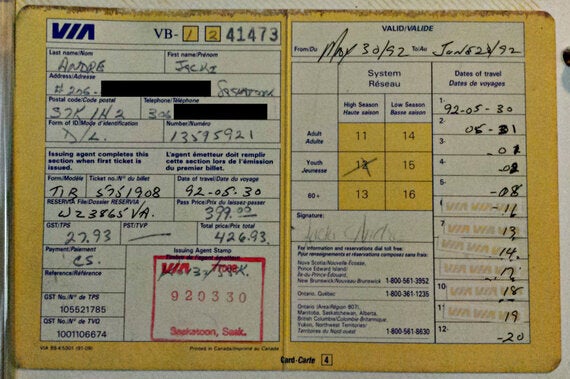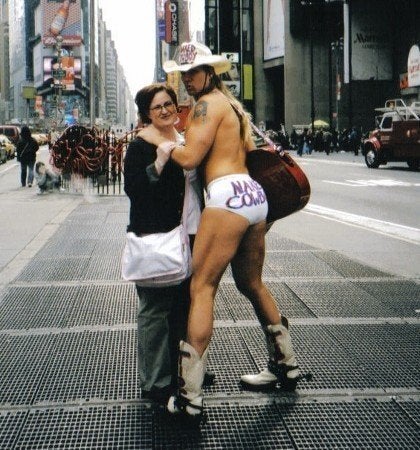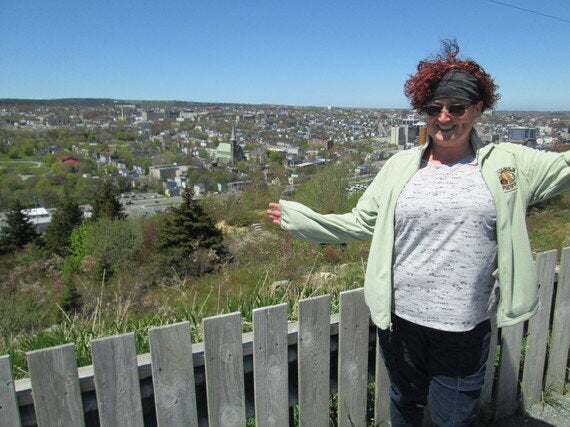
I have been mildly amused by all the recent blog pieces and articles extolling the virtues of travelling alone. I took my first solo trip in 1992, when I was 21. As a gift for graduating from university, my parents gave me a Via Rail pass. The pass was good for travelling anywhere in Canada, as much as you wanted, within a one-month period. For three weeks, I chugged around Central and Eastern Canada, marvelling over the CN Tower and Green Gables alike. It was sort of the equivalent of backpacking through Europe, I guess, as I stayed in hostels, cooked my own food and walked long distances because I didn't have money for taxis.

I have lots of amazing memories from that trip, but it was also an excellent real-time lesson on how to stay safe while travelling alone. My parents were classic "disability parents" -- overprotective and highly anxious about my ability to fend for myself. This wasn't all bad, as it instilled a cautiousness in me that has served me well. Whether I'm travelling or walking around my hometown, I am conscious of my surroundings, particularly after dark. I keep my head (and eyes) up, and I never count my money in public.
While a common-sense approach to personal safety always needs to be practiced, technology -- and the safety features it brings with it -- has changed big time since my first solo trip.
I first noticed the change when I went to New York City in 2004. My parents insisted that I check in regularly when I travelled. While I had been using email since about 1995, my parents were Luddites of sorts (i.e., they no idea how to turn a computer on). My sister was more adept and promised to visit my parents at a pre-arranged time -- the same time I would stand in front of a live-feed camera in Times Square waving wildly, so that everyone actually could see that I was alive and well.

My dad always warned me not to talk to any strange men when I travelled solo.
But what he didn't know, didn't hurt him.
My parents passed away about 10 years ago, but I think they would be amazed at how easy it is to keep tabs on me when I'm away now. Facebook updates, live tweets, Instagram selfies, Skype, other video chat platforms and plain old texting are just some of the ways travelers can check in with loved ones -- and checking in is some of the best safety advice out there.
How else can technology keep you safe when you travel solo?
- Before you leave, take photos or scans of important documents (such as driver's license, passport and prescriptions) and store them in the cloud.
- Use a travel app like TripIt or TripCase to store all your various accommodation and travel information in one easy-to-access place, including your itinerary, flight/train tickets, hotel confirmations and rental car reservations.
- Pulling out a paper map (seriously, though, does anyone do that anymore?) or a guidebook can mark you as a tourist. A mapping app is a safer way to find your way around. To avoid roaming charges and draining your battery, download maps from a site such as stay.com instead of relying on a real-time app like Google Maps. If you are moving between destinations, you can delete one map before downloading the next one, to save space.
- Rating sites like TripAdvisor, Yelp, and FourSquare can help you choose safe accommodations and friendly restaurants while also helping you avoid sketchy areas.
- One common piece of common-sense travel advice is to keep your cash and credit cards separate. That way, if your wallet is lost or stolen, you still have some form of currency to fall back on. I would suggest also stashing a few reloadable restaurant gift cards in your suitcase for emergencies. If you can load an app with some prepaid funds (such as at Starbucks), that can provide extra help in an emergency.
- Point number five above comes with a special caveat: never perform financial transactions (such as loading an app or gift card, or accessing your bank account) over public wifi unless you are using a VPN.
- Personal safety apps offer all kinds of nifty features, including automated check-ins, alerts to friends/family, audible alarms and GPS tracking.
- While personal safety apps such as bSafe can set up fake phone calls to get you out of sticky situations, even a non-functioning phone can be a safety device. No one can tell that there is no one on the line with you as you hold up your phone and say something like, "Yup, I'm almost at the restaurant where I'm meeting Steve and Bob. And then we'll all walk over to your place together."
- TravelSafe and TravelSafe Pro are highly touted apps that automatically detect your location to bring up the phone numbers for various local emergency services.
- The nice thing about cloud and web storage is that if you lose your phone, you can still access all your information. But what happens if you do lose your phone, and all the nifty apps you've installed on it? Make sure you have an app like Find My iPhone or Android Device Manager.

Truly, travelling solo is my preferred way to go. I don't have to adjust myself to anyone else's sleep/wake schedule; I can eat wherever I want, whatever I want; I can go to any sites or shops I choose without worrying my companion might be bored; and I can make deeper connections with the locals. Travelling solo can be a lot of fun, and with technology's help, it's never been safer to do so.
MORE ON HUFFPOST: